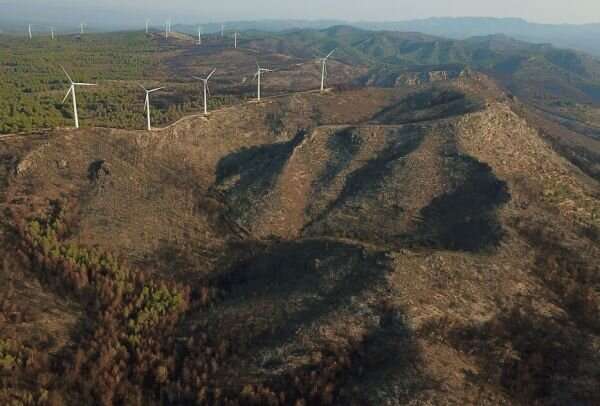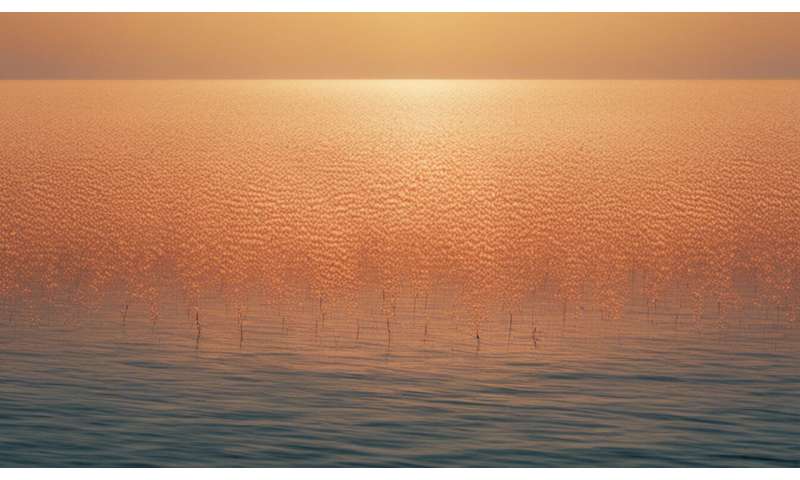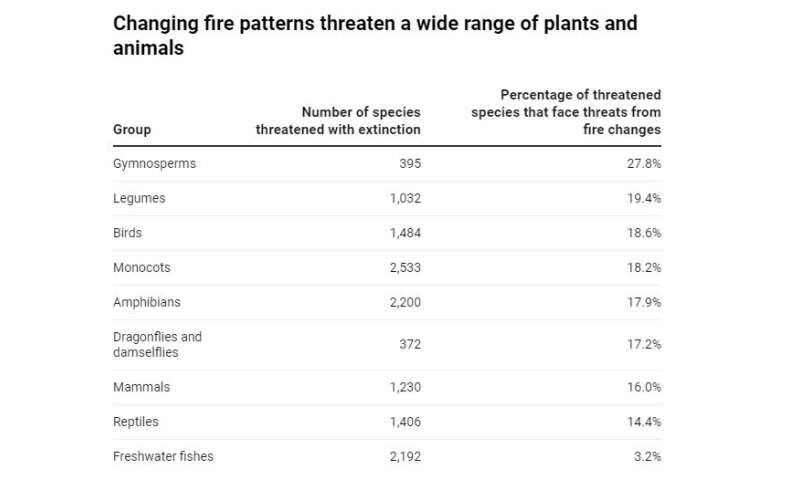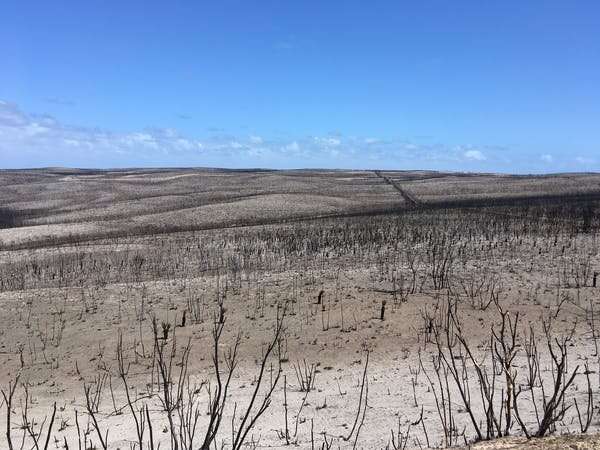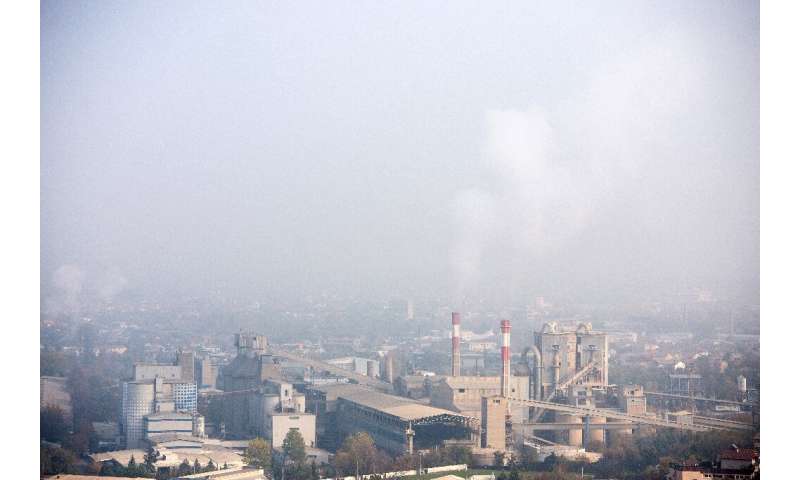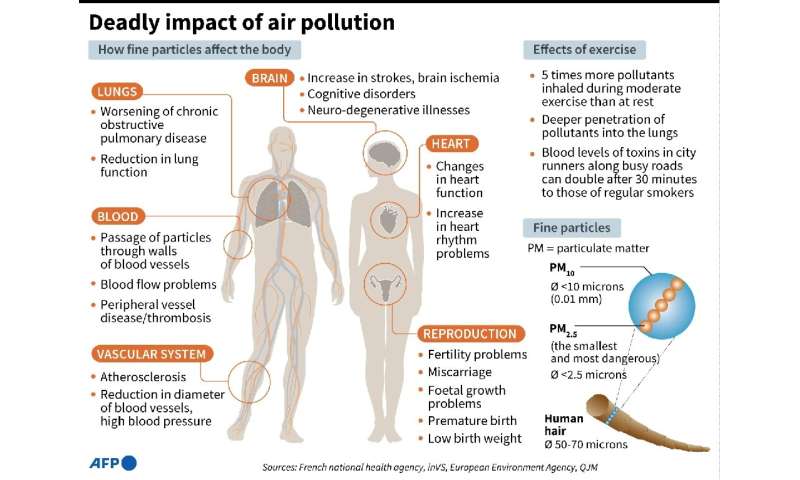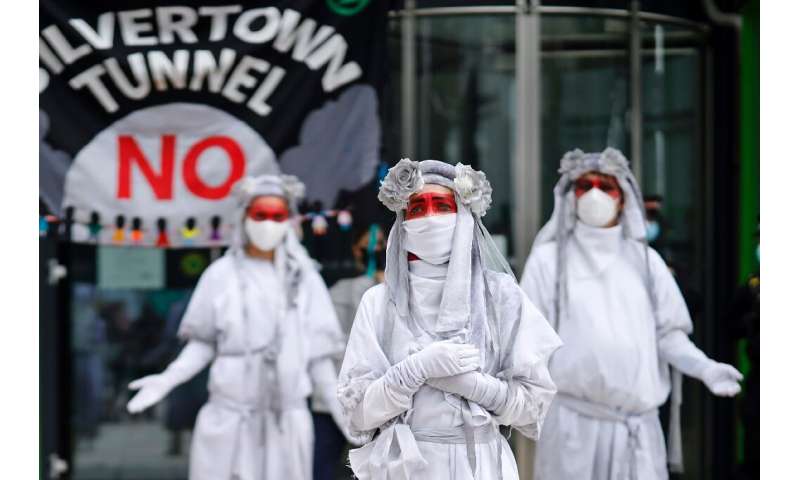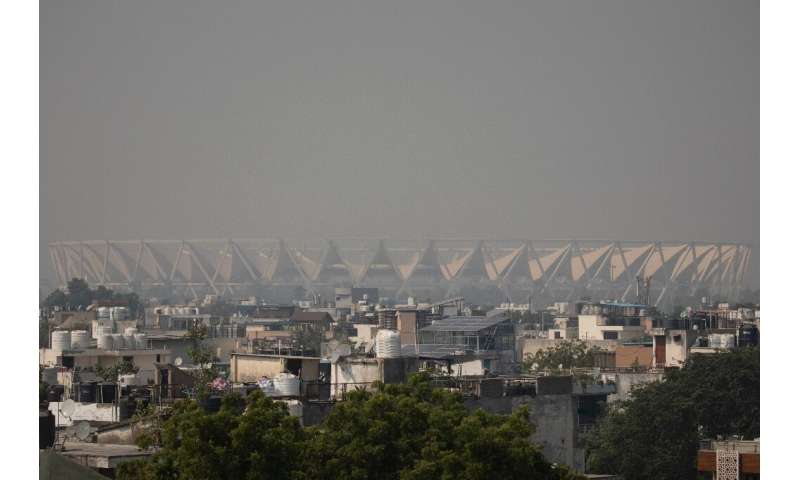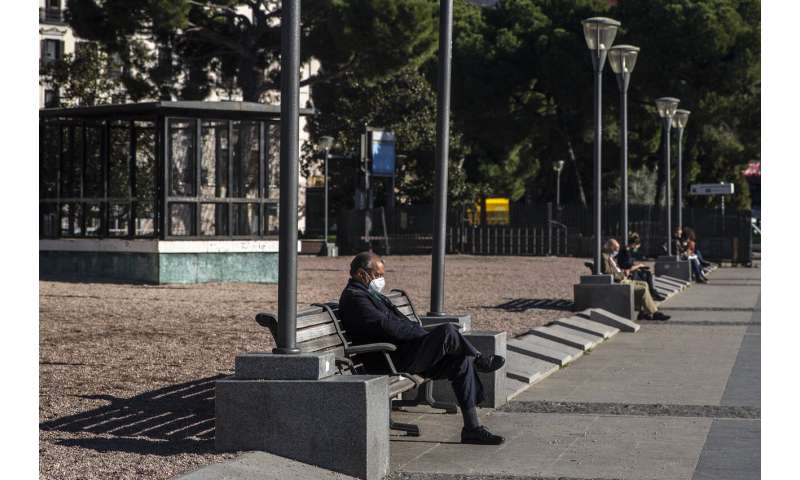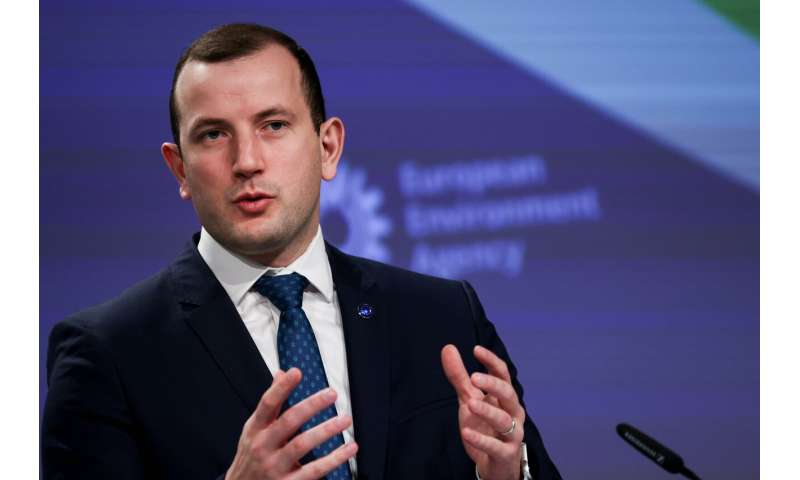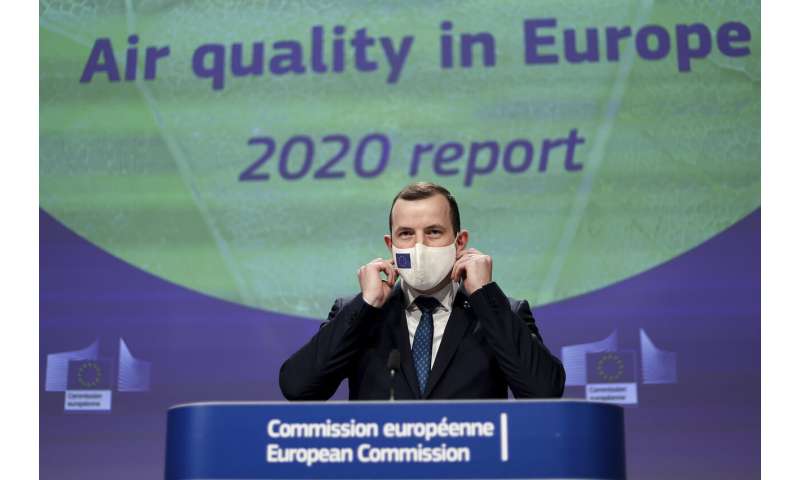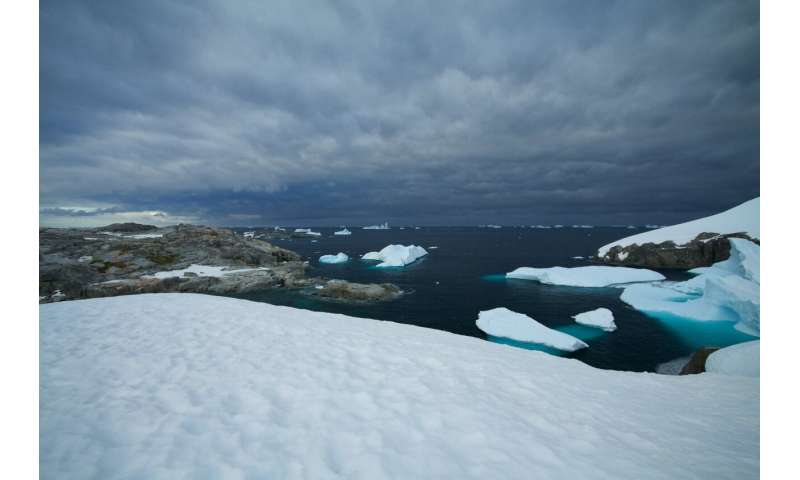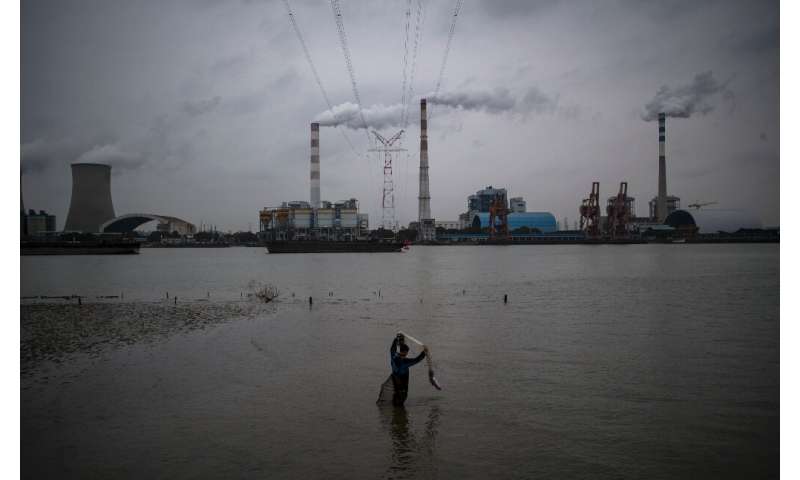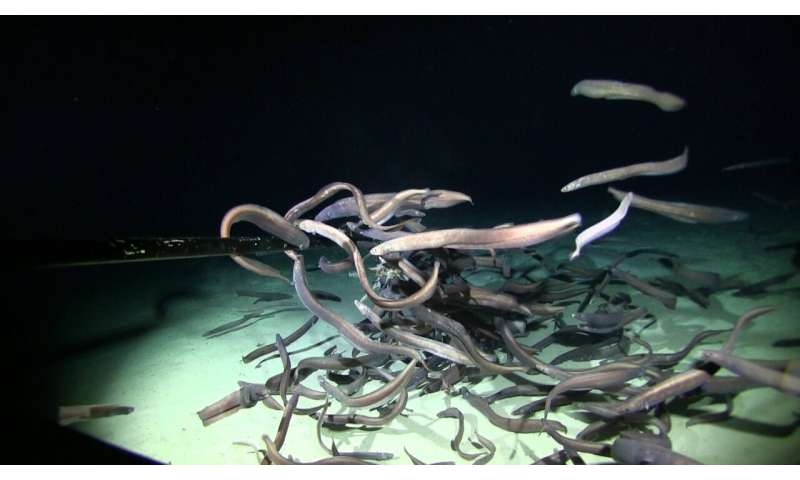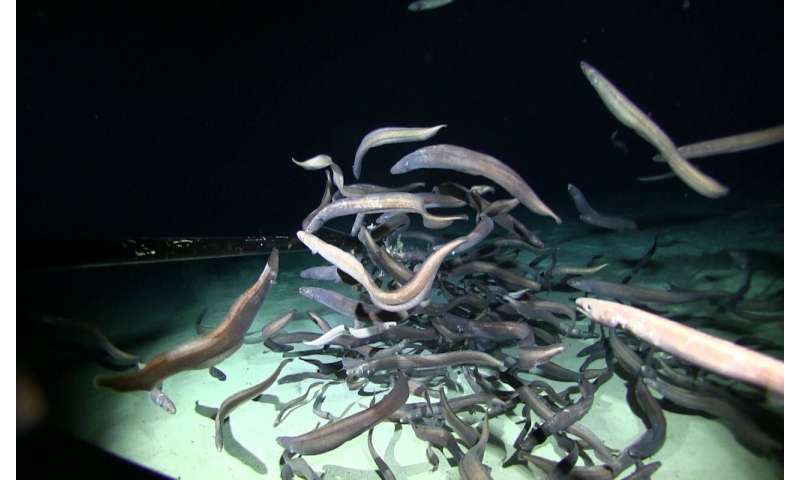Climate change presents new challenges for the drinking water supply
by Helmholtz Association of German Research Centres
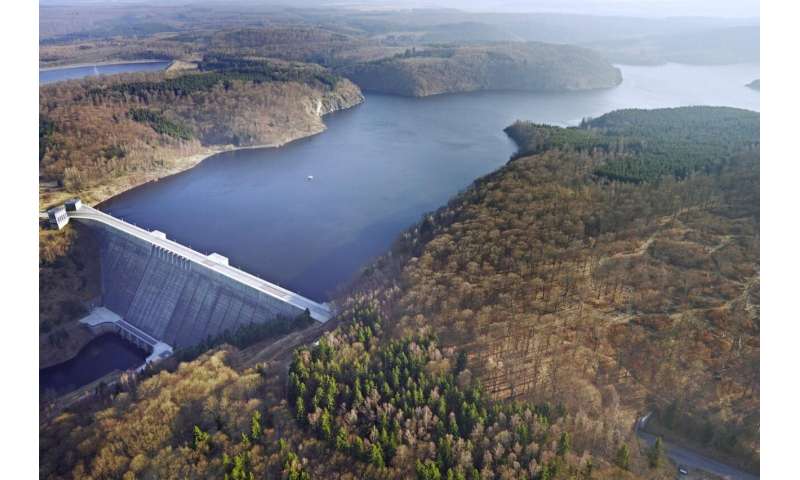
The Rappbode Reservoir in the Harz region is Germany's largest drinking water reservoir. Credit: André Künzelmann
The Rappbode Reservoir in the Harz region is Germany's largest drinking water reservoir, supplying around one million people with drinking water in areas including the Halle region and the southern part of the state of Saxony-Anhalt. Water temperatures in the reservoir now have the potential to increase significantly due to climate change. If average global warming reaches between 4 and 6 degrees by the year 2100, as the current trend suggests, temperature conditions in the Rappbode Reservoir will become comparable to those in Lake Garda and other lakes south of the Alps. In an article in Science of the Total Environment magazine, a team of researchers led by the Helmholtz Centre for Environmental Research (UFZ) writes that the reservoir's operators could partially offset the impacts this will have on the drinking water supply—to do so, they would have to change the way the reservoir is managed.
The impacts of climate change can already be seen in the Rappbode Reservoir: Over the past 40 years, the water surface temperature in the reservoir has increased by around 4 degrees in the summer months. This trend could continue, as has now been demonstrated by a team of researchers led by Dr. Karsten Rinke, who researches lakes at UFZ. Working on the basis of a lake model developed by US researchers, the team took into account potential reservoir management strategies to forecast the impacts climate change could have on water temperatures and on the lake's physical structure, which control the stratification and seasonal mixing of the body of water. Their research looked at three scenarios for future greenhouse gas emissions. The so-called "representative concentration pathways" (RCPs) describe whether greenhouse gas emissions will be halted (RCP 2.6), will continue to rise (RCP 6.0) or even continue to increase unabated (RCP 8.5) by 2100. According to the Intergovernmental Panel on Climate Change IPCC, the latter case would result in average global warming of more than 4 degrees by the end of this century.
For the RCP 2.6 and RCP 6.0 scenarios, the study's authors projected that the average temperature on the water surface of the Rappbode Reservoir is set to increase by 0.09 degrees or 0.32 degrees respectively every decade by the year 2100. This would correspond to a total increase of around 0.7 degrees (RCP 2.6) and around 2.6 degrees (RCP 6.0) by the end of this century. As expected, the increase in temperatures would be the highest under the RCP 8.5 scenario, which would see the water temperature increasing by 0.5 degrees every decade or approx. 4 degrees by 2100.
However, in terms of using drinking water, what happens in the deeper strata of the reservoir—i.e., at depths of 50 meters and below—is more serious, as this is where raw water is taken out before being treated to prepare it as drinking water. It is true that impacts by 2100 would be relatively minor under the RCP 2.6 and RCP 6.0 scenarios, as the water temperature would continue to be around 5 degrees year-round. However, water temperatures will increase significantly under the RCP 8.5 scenario—by nearly 3 degrees by the end of the century. As a result, the water in the depths of the reservoir would warm to around 8 degrees. "This would turn a reservoir in Germany's northernmost highlands into a body of water comparable to Lake Maggiore or Lake Garda nowadays," says UFZ scientist Rinke. An increase of this magnitude would have consequences because it would significantly accelerate the speed of biological metabolic processes.
"A temperature increase to 8 degrees nearly doubles oxygen demand, that is the amount of oxygen organisms consume during their respiration and degradation processes," says lead author Chenxi Mi, who is focusing on climate impacts on the Rappbode Reservoir in his doctorate at UFZ. Increased oxygen consumption will place an additional pressure on the water's oxygen budget, because the duration of summer stagnation—the phase of stable temperature stratification in lakes in which the deep water is closed off to oxygen supply from the atmosphere—is already extending due to climate change. Plus, warmer water is also unable to absorb as much oxygen. Potential consequences include intensified dissolution of nutrients and dissolved metals from the sediment, algae growth and an increase in blue-green algae.
In other words, the 8.5 scenario would have impacts on the drinking water supply if it were to occur. The reservoir's operators draw the raw water from the lowermost strata for good reason, as the water there is cold and contains only low levels of suspended substances, dissolved metals, algae, bacteria and potentially pathogenic microorganisms. If the oxygen content there decreases more rapidly due to the rising water temperature, the risk of contamination increases, for example due to substances released from the sediment and greater bacteria growth. Treating the water would therefore require a greater effort on the part of the operators, and they would have to deal with higher demands in terms of the treatment capacity they would need to reserve. "This means preventing the deep water from warming is also worthwhile from the perspective of the drinking water supply, and the ideal way to do this is ambitious climate policies that limit warming," says Rinke.
But the operators are not completely powerless against the warming of the deep water in the reservoir. The model simulations set up by Rinke's team show that a share of the heat can be exported by using a clever system to withdraw the water. This has to do with the water that is released to the downstream waters that is, the water that is withdrawn and drains into the water course below the reservoir in order to keep the discharge conditions there stable. This so-called downstream discharge would need to be withdrawn not from the lower strata as it has been thus far but rather from near the surface.
"This approach would allow the additional heat caused by climate change to be released again," Rinke explains. However, he adds, it would be impossible to prevent the deep water from heating up if the air temperature increases beyond 6 degrees. "Even though operators have had to cope more with a shortage of water due to the very dry years we've had recently, it's just as important to think about the quality of the water. In terms of reservoir management, we definitely have options and can respond to new conditions caused by climate change. In this way, we can alleviate certain negative impacts through climate adaptation measures."
The operators of the Rappbode Reservoir at the Talsperrenbetrieb Sachsen-Anhalt company are aware of this. They have been working closely together with Karsten Rinke and his team of researchers at UFZ for many years to assess the impacts of climate change and discussed about potential options for adapting the Rappbode Reservoir. The Talsperrenbetrieb is already planning new infrastructures that will make it possible to implement the new management strategies.
Explore further
More information: Chenxi Mi et al, Ensemble warming projections in Germany's largest drinking water reservoir and potential adaptation strategies, Science of The Total Environment (2020). DOI: 10.1016/j.scitotenv.2020.141366
The Rappbode Reservoir in the Harz region is Germany's largest drinking water reservoir, supplying around one million people with drinking water in areas including the Halle region and the southern part of the state of Saxony-Anhalt. Water temperatures in the reservoir now have the potential to increase significantly due to climate change. If average global warming reaches between 4 and 6 degrees by the year 2100, as the current trend suggests, temperature conditions in the Rappbode Reservoir will become comparable to those in Lake Garda and other lakes south of the Alps. In an article in Science of the Total Environment magazine, a team of researchers led by the Helmholtz Centre for Environmental Research (UFZ) writes that the reservoir's operators could partially offset the impacts this will have on the drinking water supply—to do so, they would have to change the way the reservoir is managed.
The impacts of climate change can already be seen in the Rappbode Reservoir: Over the past 40 years, the water surface temperature in the reservoir has increased by around 4 degrees in the summer months. This trend could continue, as has now been demonstrated by a team of researchers led by Dr. Karsten Rinke, who researches lakes at UFZ. Working on the basis of a lake model developed by US researchers, the team took into account potential reservoir management strategies to forecast the impacts climate change could have on water temperatures and on the lake's physical structure, which control the stratification and seasonal mixing of the body of water. Their research looked at three scenarios for future greenhouse gas emissions. The so-called "representative concentration pathways" (RCPs) describe whether greenhouse gas emissions will be halted (RCP 2.6), will continue to rise (RCP 6.0) or even continue to increase unabated (RCP 8.5) by 2100. According to the Intergovernmental Panel on Climate Change IPCC, the latter case would result in average global warming of more than 4 degrees by the end of this century.
For the RCP 2.6 and RCP 6.0 scenarios, the study's authors projected that the average temperature on the water surface of the Rappbode Reservoir is set to increase by 0.09 degrees or 0.32 degrees respectively every decade by the year 2100. This would correspond to a total increase of around 0.7 degrees (RCP 2.6) and around 2.6 degrees (RCP 6.0) by the end of this century. As expected, the increase in temperatures would be the highest under the RCP 8.5 scenario, which would see the water temperature increasing by 0.5 degrees every decade or approx. 4 degrees by 2100.
However, in terms of using drinking water, what happens in the deeper strata of the reservoir—i.e., at depths of 50 meters and below—is more serious, as this is where raw water is taken out before being treated to prepare it as drinking water. It is true that impacts by 2100 would be relatively minor under the RCP 2.6 and RCP 6.0 scenarios, as the water temperature would continue to be around 5 degrees year-round. However, water temperatures will increase significantly under the RCP 8.5 scenario—by nearly 3 degrees by the end of the century. As a result, the water in the depths of the reservoir would warm to around 8 degrees. "This would turn a reservoir in Germany's northernmost highlands into a body of water comparable to Lake Maggiore or Lake Garda nowadays," says UFZ scientist Rinke. An increase of this magnitude would have consequences because it would significantly accelerate the speed of biological metabolic processes.
"A temperature increase to 8 degrees nearly doubles oxygen demand, that is the amount of oxygen organisms consume during their respiration and degradation processes," says lead author Chenxi Mi, who is focusing on climate impacts on the Rappbode Reservoir in his doctorate at UFZ. Increased oxygen consumption will place an additional pressure on the water's oxygen budget, because the duration of summer stagnation—the phase of stable temperature stratification in lakes in which the deep water is closed off to oxygen supply from the atmosphere—is already extending due to climate change. Plus, warmer water is also unable to absorb as much oxygen. Potential consequences include intensified dissolution of nutrients and dissolved metals from the sediment, algae growth and an increase in blue-green algae.
In other words, the 8.5 scenario would have impacts on the drinking water supply if it were to occur. The reservoir's operators draw the raw water from the lowermost strata for good reason, as the water there is cold and contains only low levels of suspended substances, dissolved metals, algae, bacteria and potentially pathogenic microorganisms. If the oxygen content there decreases more rapidly due to the rising water temperature, the risk of contamination increases, for example due to substances released from the sediment and greater bacteria growth. Treating the water would therefore require a greater effort on the part of the operators, and they would have to deal with higher demands in terms of the treatment capacity they would need to reserve. "This means preventing the deep water from warming is also worthwhile from the perspective of the drinking water supply, and the ideal way to do this is ambitious climate policies that limit warming," says Rinke.
But the operators are not completely powerless against the warming of the deep water in the reservoir. The model simulations set up by Rinke's team show that a share of the heat can be exported by using a clever system to withdraw the water. This has to do with the water that is released to the downstream waters that is, the water that is withdrawn and drains into the water course below the reservoir in order to keep the discharge conditions there stable. This so-called downstream discharge would need to be withdrawn not from the lower strata as it has been thus far but rather from near the surface.
"This approach would allow the additional heat caused by climate change to be released again," Rinke explains. However, he adds, it would be impossible to prevent the deep water from heating up if the air temperature increases beyond 6 degrees. "Even though operators have had to cope more with a shortage of water due to the very dry years we've had recently, it's just as important to think about the quality of the water. In terms of reservoir management, we definitely have options and can respond to new conditions caused by climate change. In this way, we can alleviate certain negative impacts through climate adaptation measures."
The operators of the Rappbode Reservoir at the Talsperrenbetrieb Sachsen-Anhalt company are aware of this. They have been working closely together with Karsten Rinke and his team of researchers at UFZ for many years to assess the impacts of climate change and discussed about potential options for adapting the Rappbode Reservoir. The Talsperrenbetrieb is already planning new infrastructures that will make it possible to implement the new management strategies.
Explore further
More information: Chenxi Mi et al, Ensemble warming projections in Germany's largest drinking water reservoir and potential adaptation strategies, Science of The Total Environment (2020). DOI: 10.1016/j.scitotenv.2020.141366
Journal information: Science of the Total Environment
Provided by Helmholtz Association of German Research C
Provided by Helmholtz Association of German Research C
